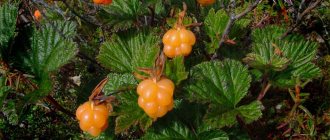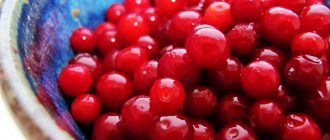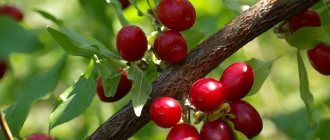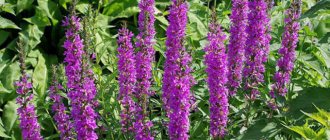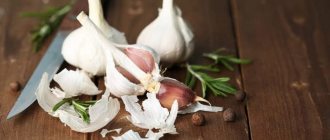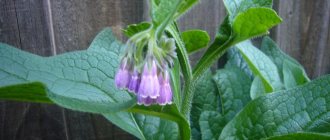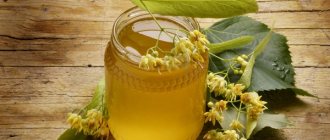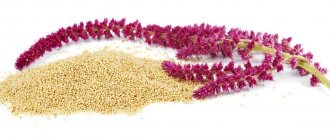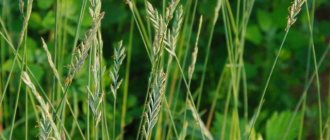A tall, up to 2 m tall, perennial umbrella plant with a hollow stem and a pungent aroma has been used as a magical remedy for a long time. It was believed that with its help one could attract and bewitch a loved one. That is why its most common name is lovage, although it also has many other names that describe certain properties of the plant: elecampane, piper, love potion, love grass, fence, and so on. Today, few people believe in the supernatural powers of love potions, but lovage is still popular in folk medicine and cooking.
What is lovage
So, what is lovage, what does it look like and how is it useful for humans? Let's start with this for now.
Lovage
is a perennial plant belonging to the umbrella family. There is only one species - lovage.
The average length of the plant is 1 - 2 meters. The stem is hollow inside. Iran and Afghanistan are considered to be the birthplace of lovage. But the plant is now cultivated in many regions.
There are many legends associated with lovage.
With the help of this plant you can bewitch a person or evoke certain feelings. There was even such a belief. If you add lovage leaves to the bath and then bathe a girl, it will make her more attractive.
The plant is very well used in perfumery and cooking. Lovage leaves initially have a sweetish taste, which gradually turns into a slight bitterness.
The plant also has a very pleasant aroma.
Lovage blooms with special umbrellas. The flowering period begins in June and lasts until autumn. That is, it blooms all summer.
Flowering medicinal lovage
This plant can grow well even in the shade. But in the sun it grows much better. So lovage is a less capricious plant.
If you look a little into history, this medicinal plant grows everywhere. It easily adapts to almost any climatic conditions.
This is also a very good plus, since in our region the weather is quite changeable. Therefore, many summer residents can grow lovage on their plots without any problems.
This plant has other popular names:
- dawn
- piper
- love
- fistula grass
- Zaborina
- Leushtyan
- love potion
- love grass
- winter celery ( because it tastes a little like celery
)
There is an opinion that lovage helps get rid of 9 diseases. For this he is sometimes called elecampane
. Previously, Russian wars took elecampane powder on long campaigns. Every morning they consumed it on the tip of a knife. This gave them strength for the journey ahead.
Chemical composition of lovage:
- essential oil
- terpineol
- cineole
- acids ( acetic, isovaleric, benzoic
) - serviterpenes
- carvaclol
- sugar and starch
- furocoumarins
- tannins and minerals
Photo of lovage
I would like to provide you with a selection of various photos of lovage. This way you will know what the grass looks like. To view, click on the image to enlarge it. Then you can use the arrows to scroll through the photos.
Uses of lovage
First of all, lovage is a medicinal plant. Secondly, it is a wonderful seasoning for all kinds of dishes. This plant is also very widely used in cosmetology ( for skin and hair care
). We'll talk more about this below.
We can fully use the plant itself. Leaves, teres, and even roots are used.
However, there is one thing.
When the lovage is preparing to bloom ( sends flower stalks
) or has completely bloomed, then in this case the plant should absolutely not be used. It doesn't matter what you are going to use it for. Remember that during this period the plant cannot be used either as a medicine or as a food additive.
The fact is that at this time, lovage becomes poisonous. It accumulates dangerous substances. Therefore, it cannot be used during this flowering time.
The rest of the time, you can safely collect it, dry it, eat it raw, and so on.
Use of lovage in folk medicine:
- for edema
- for anemia
- for headaches
- for heart disease
- as an anthelmintic
- with pyelonephritis
- for hoarseness and bronchitis
- good sedative
- for gout and so on
Applications of lovage in scientific medicine:
- with flatulence
- to improve digestion
- with poor appetite
- good diuretic and expectorant
As mentioned earlier, the uses of lovage are very wide. Therefore, you will not find any subtleties here.
For example, in the spring you can cut fresh leaves and add them directly to your salads and soups.
In early spring, I recommend drying the plant for the winter, since during this period it is quite young and fresh. You can also stew lovage, make cutlets from it, and much more.
How to store spice
Lovage can be stored either in its entirety or in powder form, which is pre-mixed with salt. Ground spices can be stored for up to 1.5 years. Storage conditions: in a cool, dark place, in a hermetically sealed container.
Dry seasoning
The beneficial properties of lovage are recognized not only in medicine; it has also found wide application in cosmetology. In the field of perfumery, it is used as a fragrance; in SPA salons, lovage is an ingredient for aromatherapy, as well as in massage treatments. The composition of hand and foot care products is often supplemented with an extract of this miracle herb.
Lovage beneficial properties and contraindications
Lovage grass has its beneficial properties and contraindications. This is what we will talk about now. So be sure to read this information carefully.
Medicinal properties of lovage
What are the medicinal properties of lovage? As mentioned earlier, it is beneficial for our body in a fairly wide range.
It is both an excellent pain reliever and anti-inflammatory agent. It also plays an excellent role as a diuretic. Not a bad laxative.
Excellent for removing various parasites from the human intestines. It also stimulates our digestion and the production of gastric juice.
Excellent for treating migraines and insomnia, as it has a calming effect. People suffering from lung diseases may also find this plant useful.
In principle, we can say that lovage is a tonic and has an immune effect.
This is also a wonderful spicy plant that it would be a shame not to use on your table. You can stock it up for the winter and then use it during cold seasons, when there are not many vitamins on the table.
You may have guessed that the name of this plant comes from the word love. It is believed that if you plant this plant in your garden, it can bring peace and love to your family.
I would also like to say about the rhizome.
It is also useful to use for various diseases. It is advisable to dig up the root in very late autumn. Literally, before frost.
Medicinal lovage root
As a medicine, we mainly prepare decoctions and infusions from lovage root. Fresh juice will also come in handy. It is especially good for skin care. You can get rid of freckles and acne.
Lovage is very good for helping people who suffer from hair loss.
In addition, I would like to note that this wonderful spicy and medicinal plant has a wide range of effects on our body. It’s not for nothing that the name of this plant comes from the word love.
Therefore, I think that many people will like this herb. After all, it has a wonderful effect.
It was not for nothing that in the old days girls prepared love decoctions and infusions from this plant. And the wives sewed the dried flower into their husbands’ clothes so that they would not be taken away.
So I believe that this herb should definitely be present on your table.
Beneficial substances are contained in lovage, and it is a wonderful aphrodisiac.
It stimulates blood flow to the reproductive organs. Thereby providing a healing and strengthening effect on the genital organs of men and women.
Contraindications for lovage
Unfortunately, there are also contraindications for lovage:
- during pregnancy
- nursing mothers
- for internal bleeding
- for essential oil intolerance
- for ulcerative processes of the stomach and intestines
- glomeluronephritis, pyelonephritis and other kidney diseases
For women
The female half of humanity uses essential oil as an aphrodisiac. Lovage is credited with magical properties.
The benefits of lovage include resistance to cold. Tolerates winter well. Early shoots appear. Even in the northern regions there is every chance of getting seeds that are quite demanding of light; they require sufficient moisture and fertile soil.
The peculiarity of the plant is its two-year development cycle. At the beginning of the first year, a rosette of leaves with a rhizome appears; during the second year, a flowering stem grows, as well as seeds. It is necessary to ensure a sufficient amount of moisture, otherwise growth will be stunted, the yield will be reduced, and as a result, its quality will be reduced to a minimum.
Growing on a windowsill
The method of propagation of lovage is by seeds, which are sown either before winter or in early spring. Seeds that have been scattered by the wind (self-sowing) are transplanted into beds, where new plants are grown. Lovage develops well during the division of perennial roots. If you want to seriously start growing this plant with seeds, then it is best to sow not scatteredly, but in rows, first sprout green shoots about 10–15 cm, and then use them as young greens.
Preparing lovage leaves and root
Let's talk about the process of harvesting lovage. The roots are usually collected in late autumn.
The roots of a one-year-old plant are not suitable. It is imperative that the plant grows for at least a couple of years. Some roots are harvested in early autumn. However, I do not recommend doing this. It’s just that until the lovage blooms, the roots contain toxic substances.
The root is dried in the same way as the roots of other medicinal plants. Lovage has a very thick root. Therefore, it is usually cut lengthwise and crosswise. It is advisable to dry in the dark.
Please note that the temperature should not exceed 35 ºC. If there is more, then the beneficial substances that make up the essential oil will begin to be destroyed. Also, for this purpose, it is recommended not to boil the root so as not to destroy the beneficial substances.
When the root dries, it is crushed and stored in glass jars.
As for the leaves, they are also dried in a dark place and stored either in jars or wooden boxes.
Types and varieties of lovage
Lovage has several popular varieties:
- Hercules is a very fragrant, winter-hardy and high-yielding variety with large and juicy green leaves covered with a waxy coating. The plant quickly grows leaf mass, which can be cut off within 20 days from the moment of emergence;
- The leader is a frost-resistant productive plant up to 70 cm high with light green, juicy leaves of a slightly pungent taste with a barely pronounced hint of garlic in the aroma. The first harvest can be harvested a month after germination;
- Amur is a productive variety of medium cold resistance with compact bushes up to 60 cm high and large aromatic gray-green leaves that grow in 25 days;
- Preobrazhensky Semko - neat bushes up to 2 m high with large aromatic dark green leaves with a pungent bitter taste. Leaves begin to grow directly from the roots. The variety is characterized by the highest productivity and increased frost resistance, therefore it does not require shelter for the winter when grown in areas with a cold climate;
- Odyssey is a frost-resistant variety with aromatic and spicy-tasting leaves, forming bushes up to 2 m high that can grow in one place for up to 10 years;
- Udalets is a high-yielding variety with bushes up to 1 m high and large yellow-green fragrant leaves, of which there can be up to 40 in a rosette;
- Don Juan is a perennial plant producing up to six harvests per season with long-petioled, glossy, serrated leaves with a strong aroma.
Lovage tincture
Before giving you recipes for lovage tincture, I want to note again. Under no circumstances can we use lovage ( for food or as medicine)
) when the plant is preparing to bloom or is already blooming. Because hazardous substances accumulate during this period.
For digestive problems and poor appetite:
- Take 1 tsp. chopped lovage roots and pour 1 cup of boiling water.
- Let it sit for 30 minutes.
- Strain the tincture.
- Apply 1 tbsp. l. 3 times a day before meals.
Regular lovage tincture:
- 1/2 l. pour boiling water 1 tbsp. l. plant roots.
- We insist for 1 hour. Afterwards we filter.
- You need to take 4 times a day, half a glass before meals.
Infusion for insomnia and for wounds on the body:
- 1/4 l. cold boiled water pour 1 tbsp. l. lovage roots.
- Leave for 4 hours and then filter.
- For insomnia, take this infusion 2 times a day, half a glass. If you have wounds that don’t heal well, be sure to try washing them with this tincture.
Planting and caring for lovage
- Planting: sowing seeds in open ground - before winter or at the end of April. Sowing seeds for seedlings - in March, transplanting seedlings into open ground - at the end of April.
- Flowering: June-July.
- Lighting: bright sunlight, diffused light, partial shade.
- Soil: composition does not matter.
- Watering: when grown in a sunny area, frequent and plentiful; when grown in shade, natural moisture is sufficient.
- Feeding: once every 2 weeks with mineral or organic solutions.
- Reproduction: seed.
- Diseases: septoria (white spot).
- Pests: carrot flies.
- Properties: the plant has healing properties and is grown as a medicinal plant.
Read more about growing lovage below.
Lovage herb decoctions
Unfortunately, decoctions are less effective than tinctures. The fact is that when boiling, many useful substances in the plant evaporate.
But nevertheless, the decoction also helps well in treatment. Therefore, below I want to give you some good recipes to take note of.
For anthelmintic action:
- 1 tsp. dry lovage roots pour 150 ml of boiling water. Boil for 8 - 10 minutes.
- Leave until cool.
- Take 1 tbsp. l. three times a day.
Decoction for menstruation:
- Put 6 grams in 1 glass of water. lovage roots.
- Boil it all over low heat for 10 minutes.
- Leave for 4 hours and then filter everything.
- Take 3 times a day, 1 tbsp. l. half an hour before meals.
Diuretic:
- 3/4 l. pour 2 tbsp of water. l. lovage roots.
- Heat over low heat until boiling.
- Then boil for 10 minutes.
- Leave for 1 hour and drain through cheesecloth.
- Take 3-4 times a day, 1 tbsp. l. half an hour before meals.
Love potion for men:
- 30 gr. chopped lovage root pour 2 tbsp. boiling water
- Cook for 30 minutes. Then cool and strain.
- Take 10 g. before meals 2 - 3 times a day. This medicine is good for restoring male strength.
Contraindications
In order for the treatment to be beneficial, you need to take into account the medicinal and beneficial properties of medicinal lovage and the contraindications that it has. Plant preparations should not be used if:
- glomerulonephritis,
- uterine bleeding,
- heavy menstruation,
- hemorrhoids.
Internal use of lovage is strictly contraindicated for pregnant women, as it promotes blood supply to the pelvic organs and can lead to pregnancy failure.
You should also take into account: according to some sources, the roots of lovage are poisonous until the flowering phase. Therefore, in order to avoid unpleasant consequences, it is better to refrain from collecting them during this period.
Sources:
V.V. Reshetnyak. Herbalist.
M.A. Nosal, I.M. Nosal. Medicine plants and methods of their adoption among the people.
Rim Akhmedov. Plants are your friends and foes.
A.P. Popov. Medicinal plants in folk medicine.
Advice from the traditional healer Evdokia. Herbalist, illustrated reference book.
L.G. Dudchenko, A.S. Kozyakov. Spicy-aromatic and spicy-flavoring plants.
V.Ya. Berry. Medicinal plants in dermatology and cosmetology.
Maznev N.I. Encyclopedia of medicinal plants.
A. Markova. Golden recipes of traditional medicine. A unique reference book.
L.V. Nikolaychuk, M.P. Jigar. Healing plants. Medicines. Culinary recipes. Application in cosmetics.
Lovage herb for alcoholism - recipe
The herb lovage also helps very well against alcoholism. Below I give several recipes that will help you get rid of a bad habit.
Infusion for alcoholism:
- In 250 gr. vodka, add lovage root and 2 leaves of noble laurel.
- We insist for 2 weeks.
- Then we drink 10 grams. before eating. We do this until we are completely disgusted with alcohol. As a rule, after a week the craving for alcohol is completely repelled. The infusion tastes very disgusting. But nevertheless, it fights off the craving for alcohol well. It also strengthens the nervous system very well. But there is an easier remedy (recipe below).
Lighter infusion:
- Mix equal amounts of lyubka bifolia root and lovage herb.
- Pour 4 tablespoons of the resulting mixture into 1 liter. water.
- We insist 12 hours.
- Next, cook for 15 minutes over low heat. Then cool and strain.
- The course of treatment is a month.
Decoction against alcohol:
- The following components must be mixed in equal proportions: hop cones, hawthorn flowers, calendula leaves and flowers, thyme, valerian, oregano, marjoram, mountain and common Dubrovnik grass, bedstraw, Bogorodskaya grass.
- 2 tbsp. l. pour 0.5 l. Place boiling water on the fire for 10 minutes.
- Cool and strain.
- Add 100 g to the broth. lovage extracts.
- Take 1/4 cup before breakfast and lunch for 2 weeks.
Lovage for alcoholism - reviews
I want to show you a few reviews from people who took lovage for alcoholism and were cured.
Igor - 46 years old, Moscow:
Due to serious life problems, I began to drink frequently to relax. Unfortunately, over time I became very addicted. As a result, every evening I drank at least 2 - 3 glasses of vodka. I tried to quit later, but it didn’t work.
When friends gave me a recipe for lovage for alcoholism, at first I didn’t pay attention to all this. I didn’t pay attention until I decided to try it myself. To my surprise, in the second week my addiction disappeared. Now even thinking about alcohol is somehow disgusting.
Andrey - 34 years old St. Petersburg:
Vodka tincture really helps. Although it tastes disgusting, it is very good at instilling an aversion to alcohol. The main thing here is not to refuse the first time, but to continue using the medicine.
You just need to adjust yourself psychologically. Then everything will be fine. I was able to recover in the first week.
Marina 52 years old Brest:
My family used to have frequent drinking sessions. The husband drank heavily and took friends to the house. Most of the salary went towards all this poison. I tried to argue with him and somehow force him to give up everything, but it was no use.
It only got worse. Often it even came to fights. All this also had a bad effect on my health. In the end, I decided to try a different method.
My sister once gave me a recipe for vodka tincture. I decided to make it myself. She insisted, and then bottled it so that her husband wouldn’t guess.
To my surprise, after some time my husband began to give up alcohol. He referred to the fact that he was disgusted to drink it. That's how he then gave it all up. Now we don't have all this drinking. And we save more money for groceries.
More Lovage Recipes
I also want to give you additional lovage recipes. They may also be useful to you later. After all, this plant was specially grown in monasteries, because it served as both a seasoning and a medicine.
Preparations made from lovage improve digestion and calm the nerves. They cope with inflammation, relieve itching and swelling, drive bile, cleanse the bronchi.
Crushed fresh leaves are applied to the forehead for headaches. The juice of the plant is used to wipe pigment spots twice a day for two weeks before the onset of sunny spring days.
To improve digestion:
- Grind the washed and dried roots and grind them into powder in a mortar.
- Take it on the tip of a knife three times a day 30 minutes before meals.
Against pinworms:
- 1-2 tbsp. l. Mix lovage root powder with 3 tbsp. l. honey
- Take 0.5 tsp. mixture three times a day - in the morning on an empty stomach and before meals.
To cleanse the bronchi:
- 2 tsp. chopped dry roots and stems pour 1 tbsp. boiling water
- Leave for an hour.
- Strain through two or three layers of gauze.
- Drink a third of a glass three times a day 30 minutes before meals. The course is a month.
For bedwetting:
- To collect, you need to measure on a pharmacy scale the required amount of the following ingredients ( in dry crushed form
): common heather grass, horsetail and curly parsley seeds - 20 g each, goldenrod grass, common bean pods, common hop cones, lovage root - 10 g. - 1 tbsp. l. mixture for 1 tbsp. boiling water, leave until cool, strain.
- Drink the infusion one sip at a time throughout the day.
Collection and preparation
For medicinal purposes, the roots of lovage are prepared, and less often the leaves (herb) and seeds are collected:
- grass - during the flowering period;
- seeds – at the stage of full maturity;
- roots - in late autumn after the above-ground part of the plant dies.
To harvest medicinal lovage (roots), choose two to three year old plants. The dug roots are washed in running cold water, cut into pieces and dried outdoors in the shade, under a canopy with good air ventilation, or indoors, spread in a thin layer.
The leaves are plucked along with petioles and flowering shoots. Drying is carried out as usual (see above).
Finished dried raw materials of lovage are stored in boxes or bags made of natural materials in a dry, well-ventilated area. To store fruits, tightly closed glass jars should be preferred. Best before date:
- leaves – 1 year;
- roots and seeds – 2 years.
Lovage plant for hair and skin
The lovage plant is also very beneficial for hair and skin. The girls always washed their hair before and rinsed it with lovage decoction. And those who like to go to the bathhouse always take a branch of the plant for a pleasant aroma.
Lovage infusion for hair:
- 2 tbsp. l. pour 2 liters of crushed plant roots. boiled water.
- We insist for 3 hours.
- Rinse your hair with this infusion after washing. Subsequent rinsing with water is not required.
Hair decoction:
- 3/4 l. pour 2 tbsp of water. l. lovage roots.
- Bring to a boil and simmer over low heat for 10 minutes.
- Leave for 1 hour and then filter.
- After washing your hair, rinse your hair with the resulting decoction.
This plant also quickly heals wounds and scratches on the body. Baths, lotions and various compresses help well with skin diseases. It also helps eliminate skin pigmentation problems.
To take a bath with a decoction of leaves:
- 100 gr. pour 1 liter of grass leaves. boiling water and leave until cool.
- Strain and add to the bath.
- You need to take a bath for 15 minutes. Afterwards, rinse with cool water.
I especially recommend taking such baths for those who have dermatitis, psoriasis or eczema.
Usually small children are also given a bath with lovage. That is, the herb is steamed to enhance the aroma and create a cleansing effect.
Infusion for skin:
- 5 gr. pour the root of this herb with 1 glass of boiled hot water.
- Let it sit for 1 hour.
- We use it as a lotion.
It is especially good at combating freckles and itchy skin.
Lovage in cooking
I already mentioned once that lovage also has its place in cooking. European chefs widely use this herb as a spice. It is added to meat dishes from beef and lamb. Add to meat broths and vegetable dishes.
Fresh leaves are often added to various salads.
Lovage goes well with fish and various fish broths. However, it needs to be added in small quantities. The plant's flavor also pairs well with parsley, rosemary, thyme, garlic and onion.
Many people like to add lovage to first courses (borscht or soups). This adds some sophistication and usefulness. The main thing is not to overdo it too much, as in large quantities it causes bitterness.

